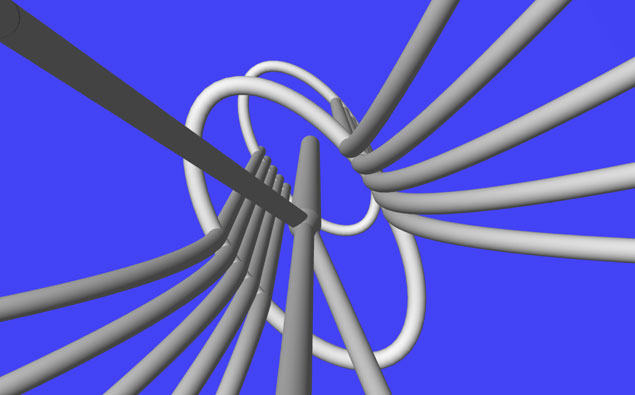Valves
The spokes house features that allow them to work as huge air circulators. In each spoke is a muscle, attached to the spoke wall, 300 km tall. Living on the surface of the muscle is a vertical forest with trees that are sited as dwarfing the tallest redwoods. These trees grow out instead of up. At the top and bottom of this muscular chamber are valves.
The valves are sited as being approximately 5 km thick so, you guessed it, I've made them 5 km thick here.

The thickness of the muscular wall is never noted in the books. For the model I've made it 3 km thick. For
something that can expand to fill nearly half the space of the spoke, I figured a nice thick wall was
appropriate. I often forget why I just don't make it 5 km thick - that's so there's a ledge of sorts to stand on at the bottom of the spoke. Titan describes Gaby and Cirocco walking around there, looking down, and having to climb up a little to see down and across to verify the valve was closing. As always, if anybody thinks it should be thicker or thinner for various reasons, I'm open
to suggestions.

The valves are giant sphincters that, when open, are the 5 km thickness noted above. When closed, they
seal around the braided cables in the center of the spoke. Discussed in Wizard, the valve is more
sponge-like than membranous.

The animation above illustrates a sped-up cycle of the lower Rhea valve closing and opening. Notice how it seals around the central cable. This is one reason the two other cables braid into it. Another reason being to support the enormous weight of the spoke.

I've always thought that the lower valves are at least partly responsible for holding the slanting cables
together. Those cables must be exerting colossal pressure on the valve and spoke wall there.
